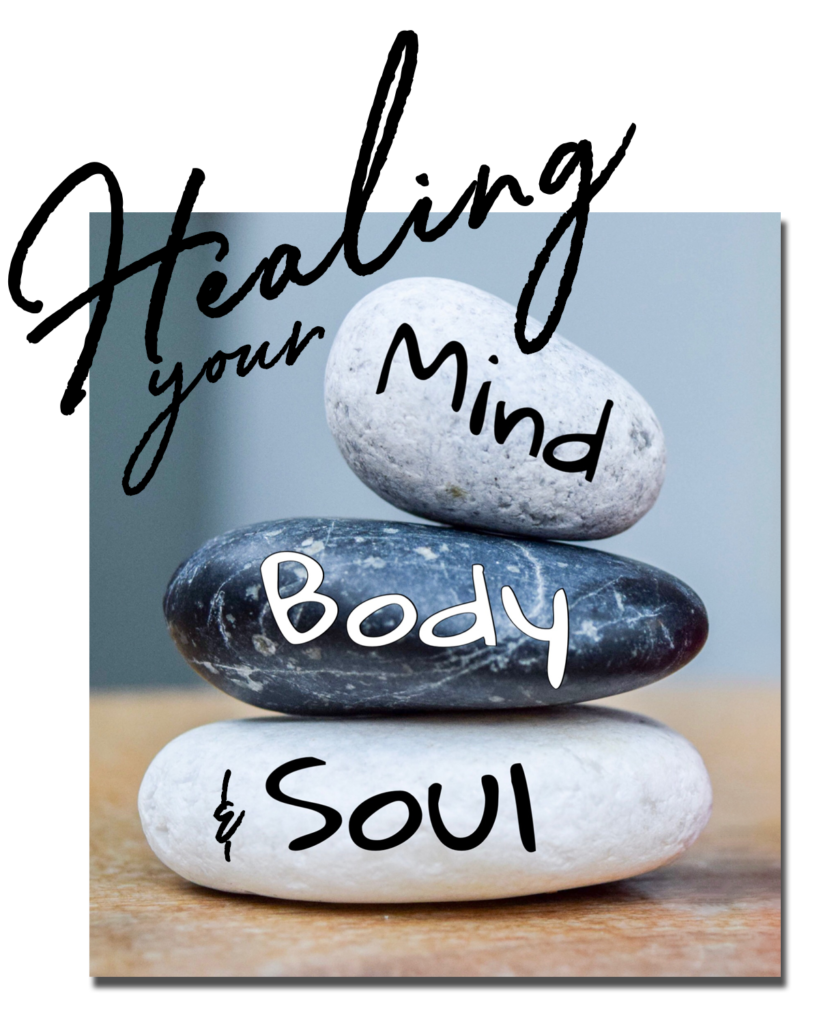In this blog post, we will explore the transformative power of letting go and healing the past. Additionally, we will delve into practical steps for emotional release. Join me on this journey of forgiveness and healing. Let’s aim for a brighter, more fulfilling future.
“The beautiful journey of today can only begin when we learn to let go of yesterday.” – Steve Maraboli.
Letting Go: Healing Our Wounds
Letting go of past trauma can be one of the most challenging yet liberating experiences on our spiritual journey. Whether it’s loss, regret, or betrayal, holding onto these emotional burdens can ultimately prevent us from experiencing true peace and happiness. In this blog post, I will share my personal journey of healing. Embracing forgiveness and letting go transformed my life. Understanding Caroline Myss’s teachings and receiving divine guidance helped me release my pain. It allowed me to step into a brighter, more fulfilling future.
 Common Life Challenges in Letting Go
Common Life Challenges in Letting Go
Some common life challenges that people emotionally have trouble letting go of include:
Loss and Grief: The death of a loved one or the end of a relationship can bring intense emotions. These can be difficult to let go of.
Regret and Guilt: Past mistakes or decisions can weigh heavily on your mind and make it challenging to move on. Practicing self-forgiveness and learning from your mistakes is crucial to letting go of regret and guilt.
Traumatic Experiences: Traumatic events can leave a lasting impact on your emotional well-being. Seeking support from a therapist or counselor can help process the trauma and begin the healing process.
Resentment and Anger: Holding onto anger and resentment can be toxic to your mental health. Finding healthy ways to channel your emotions and practice forgiveness, both for yourself and others involved, is essential.
Fear and Anxiety: Constant worry and fear about the future can hinder personal growth and happiness. Practicing self-care, seeking professional help if needed, and challenging your negative thoughts can help let go of fear and anxiety.
Remember, letting go is a process that takes time and effort. It may be helpful to seek support from loved ones, therapists, or support groups to navigate through these challenges.
Caroline Myss and the Addiction to Wounds
Caroline Myss, in her book “Why People Don’t Heal and How They Can,” explains that healing requires forgiveness, and many people don’t heal because they are addicted to their wounds. People often resist forgiveness because it can feel like condoning the hurt done to them or letting the wrongdoer off the hook. Wounds can provide a way to interact socially, as it is socially acceptable and comfortable to lead a conversation with our wounds, as if they define us as a person. We become addicted to our wounds because they garner sympathy and attention from others, creating a sense of validation and identity. She explains that when we show others our wounds, they back off and show sympathy, and won’t challenge us again. Revealing our wounds is a very intimate approach to interacting with others. Unfortunately, holding on to our wounds and reliving them repeatedly leads to illness and disease—a topic for another blog post soon.
Realizing My Need to Let Go and Heal the Past
This concept resonated deeply with me as I realized that part of my healing journey involved letting go of these old wounds and the social dynamics they created. Looking back, I cringe at how I felt compelled to share my recent wounds with anyone who would listen. Believe me, it’s time to stop if you are doing this. Once you heal, you realize how it made you appear vulnerable and desperate.
The Role of Old Wounds in Social Dynamics
For years, I carried my pain like a badge, believing that sharing it openly would bring validation or understanding. I found myself replaying the story over and over again, recounting every detail to anyone who would lend an ear. At the time, I thought I was processing my grief, but in reality, I was trapping myself in a cycle of reliving the pain.
The Turning Point in Letting Go and Healing the Past
It wasn’t until I started healing through the Emotion Code and Body Code that I began to see the toll this behavior had taken on me. Sharing my wounds so openly had made me appear vulnerable—but not in a healthy way. It wasn’t the kind of vulnerability that fosters genuine connection or strength. Instead, it made me seem desperate, stuck, and unable to move forward.
Letting Go Requires Releasing Your Story
Healing wasn’t just about letting go of the pain; it was about letting go of the identity I had built around that pain. I had to stop using my wounds as a way to relate to others or to define my worth. I had to stop telling myself—and others—that my story was only about my heartbreak. When I finally realized this, it felt like a weight lifting off my shoulders.
Redefining Yourself Beyond the Pain
The turning point came when I understood that true healing required me to let go—not just of the hurt, but of the story I kept telling myself about the hurt. I had to see myself not as the victim of my circumstances, but as the heroine of my own story.
 Steps Toward Letting Go and Healing the Past
Steps Toward Letting Go and Healing the Past
If you find yourself constantly sharing your wounds, I encourage you to pause and ask yourself why. Are you seeking validation? Connection? Comfort? Recognizing the pattern is the first step toward breaking it. Once I stopped defining myself by my pain and started focusing on my healing, I discovered a new sense of empowerment.
Moving Forward with Strength and Healing
Healing is not about erasing the past; it’s about reframing it. It’s about recognizing that our wounds don’t define us—they shape us, but they don’t have to hold us back. When we let go of the need to replay them, we create space for something far greater: peace, self-love, and a future filled with infinite possibilities.
Shifting Focus to Strengths
In my case, trying to prove that it wasn’t my fault but the other party’s shortcomings that ended our relationship only damaged my own credibility. By reliving my wounds, I wasn’t allowing them to heal. Instead, I was nurturing them, letting them fester and define my interactions and my self-worth. This realization was a pivotal moment in my healing journey. I understood that true healing required me to stop clinging to these wounds as a crutch and to start letting go.
Letting go of these emotional crutches and shifting the focus from my wounds to my strengths was not easy. Changing my mindset and interactions required a conscious effort. Gradually, as I stopped sharing my wounds, I noticed a significant shift in how I felt about myself and how others perceived me. I began to see myself not as a victim of my circumstances but as a survivor, someone who has faced challenges and grown stronger.
Steps to Letting Go of Wounds 
Recognize the Pattern: The first step is to recognize the pattern of using your wounds as a social crutch. Be honest with yourself about how often you share your wounds and why you feel compelled to do so.
Shift Your Focus: Shift your attention to your strengths and achievements instead of focusing on your wounds.
Practice Forgiveness: As Caroline Myss emphasizes, forgiveness is crucial for healing. Forgive yourself for holding on to your wounds and forgive those who caused them. This doesn’t mean condoning their actions but freeing yourself from the burden of anger and resentment.
Seek Support: Surround yourself with supportive and positive individuals who encourage your growth and healing. Professional help, such as therapy or counseling, can also be invaluable in this process.
Embrace Vulnerability: Allow yourself to be vulnerable in healthy ways. Share your feelings and experiences with trusted individuals who can provide support and perspective without feeding into a cycle of pity.
Focus on Healing: Engage in practices that promote healing and self-care. This can include meditation, journaling, exercise, and other activities that nurture your body, mind, and spirit.
Letting go of old wounds and the social dynamics they create is a challenging but necessary step towards true healing. By shifting our focus from our wounds to our strengths, we can redefine ourselves and our interactions with others. This transformation allows us to move forward with a renewed sense of self-worth and inner peace.
The Healing Power of Forgiveness
Forgiveness always came easy for me, but letting go of the pain and betrayal that lingered in my heart was much more challenging. Although my heart, once shattered and weary, began to mend slowly, my spirit started to rise. It took two long years before my mind could truly release the pain and forgive myself and the other. Once I managed to let go, the heaviness of the burden caused by another’s actions felt as if a weight had been lifted off my shoulders.
To learn more about the power of forgiveness and its role in healing, read my blog post The Healing Power of Forgiveness.
A New Chapter of Peace and Self-Love
Though the path was long and challenging, moments of guidance and support from friends and my angels illuminated the way. This act of letting go marked the beginning of a new chapter in my life—one where I would find true peace, happiness, and self-love. This journey was not just about finding light in the darkness; rather, it was about rediscovering my true self and the boundless love that the universe had always held for me. Letting go was transformative, allowing me to embrace a deeper connection with myself and the divine, and to understand that forgiveness is the key to unlocking a life filled with love and peace. T
Letting Go of Emotional Attachments
Letting go of emotional attachments can be incredibly challenging because these attachments often form the core of our identity and sense of security. We may cling to past relationships, experiences, or traumas because they are familiar, even if they are painful. The fear of the unknown, the comfort in familiarity, and the deep-seated need for validation and connection can make it difficult to release these emotional bonds. Moreover, these attachments can provide a sense of control over our lives and narratives, making the idea of letting go seem daunting and unsettling. However, holding onto these attachments can hinder our growth and prevent us from experiencing true peace and happiness.
 Here are some strategies that might help you in the process of letting go:
Here are some strategies that might help you in the process of letting go:
Acknowledge and Accept Your Emotions: Recognize and validate your feelings, allowing yourself to fully experience and process them. Avoid suppressing or denying your emotions, as this can hinder the letting go process.
Practice Self-Compassion: Be kind to yourself and practice self-care. Treat yourself with understanding and forgiveness as you navigate through the process of letting go.
Seek Support: Reach out to trusted friends, family members, or a therapist who can provide a non-judgmental space for you to express your emotions and gain perspective.
Challenge Your Beliefs and Thoughts: Examine any negative or limiting beliefs that may be keeping you attached. Consider reframing your perspective and replacing negative thoughts with more positive and empowering ones.
Set Boundaries: Establishing boundaries can help you create emotional distance and protect your well-being. This might involve limiting contact with the person or situation that you’re trying to let go of.
Engage in Self-Reflection: Reflect on the lessons learned from the experience and focus on personal growth and development. Seek opportunities to learn and evolve from the situation, allowing yourself to move forward.
Engage in Healthy Coping Mechanisms: Channel your emotions into positive outlets like journaling, exercising, practicing mindfulness, or pursuing hobbies that bring you joy and fulfillment.
Letting go is a journey that requires patience, self-compassion, and support. By embracing these strategies, you can begin to release the emotional attachments that no longer serve you and open yourself up to new possibilities and a more fulfilling, peaceful life.
Here’s an elaboration on each section to provide more depth for your readers:
Overcoming the Fear of Letting Go
Many of us cling to the past, struggling to let go of emotional attachments due to deep-seated fears and uncertainties. These fears may stem from a desire to control our environment, a fear of the unknown, or an attachment to the familiar—even if the familiar brings pain. Letting go can feel like stepping into uncharted territory, but understanding and addressing these fears is the first step toward emotional freedom and a more peaceful life.
Identifying the Fear
Take a moment to identify what exactly you are afraid of losing. Is it the comfort of familiarity, even if it’s painful? Are you worried about who you’ll be without this attachment? Naming and understanding these fears is crucial. Journaling can be a helpful tool for this process. Write down your fears and consider where they come from. Often, we find that these fears are rooted in past experiences or assumptions rather than in present reality. Self-awareness is the first step toward dismantling these fears.
Once you’ve identified your fears, look at the beliefs supporting them. Are you telling yourself, “I’ll never find happiness again,” or, “I can’t live without this person/job/situation”? Question the validity of these thoughts. Are they based on fact, or are they limiting assumptions? Replacing negative beliefs with empowering ones is transformative. For instance, replace “I can’t live without this” with, “I am capable of thriving and creating a fulfilling life.” This mental shift can open the door to new possibilities and growth.
Taking Small Steps
Change doesn’t have to be overwhelming. Start small. If you’re afraid of letting go of a toxic relationship, begin by creating emotional distance, such as limiting your communication. If you’re clinging to a past mistake, practice forgiving yourself in small doses daily. Celebrate these small victories. Each step you take builds confidence and proves that letting go is not only possible but also a gateway to growth and freedom.
You don’t have to face the process of letting go alone. Reach out to people who can provide a safe and supportive space for you. Trusted friends and family can offer valuable perspectives, while a therapist or counselor can guide you through the deeper work of understanding and releasing your fears. Support groups, both in-person and online, can also provide a sense of community and shared strength. Surround yourself with those who encourage your growth and healing.
Visualizing the Future
Visualization is a powerful tool for overcoming fear. Close your eyes and picture your life after you’ve let go of the emotional weight you’re carrying. Imagine waking up feeling lighter, free of the burdens that have been holding you back. Picture yourself pursuing dreams or relationships with an open heart. This positive imagery can help inspire and motivate you to move forward. Visualization helps your mind believe in the possibility of change, making it easier to take the steps necessary to get there.
 Practicing Self-Care
Practicing Self-Care
Taking care of yourself is essential during this process. Letting go can be emotionally draining, so prioritize activities that replenish your energy and well-being. This could include physical exercise, meditation, nourishing meals, or spending time in nature. Engage in activities that bring you joy and remind you of your worth. When you treat yourself with kindness and compassion, you build the resilience needed to face and overcome your fears.
Acknowledge and celebrate each step you take toward letting go, no matter how small it seems. Did you have a difficult conversation that set boundaries? Did you go a whole day without revisiting a painful memory? Celebrate these moments! Recognizing your progress reinforces your ability to change and reminds you that growth is happening, even if it feels slow. These celebrations fuel your journey and provide motivation to keep moving forward.
Embracing the Journey of Letting Go and Healing the Past
Understanding the fears that hold us back and taking proactive steps to address them is a powerful act of self-care. Letting go is a journey, and it’s okay to take it one step at a time. By being patient and compassionate with yourself, you create space for healing, peace, and joy. With each step, you release the grip of the past and open your heart to a brighter, more fulfilling future.
This expanded version adds more actionable insights to each section while keeping the flow engaging and informative for your readers. Let me know if you’d like further tweaks!
Embracing a New Chapter
As I moved forward, the steadfast support and ever-present guidance of God and my Angel Guides became my trusted companions. ( More on how I channel my Angel Guides on my blog soon) They guided me, offered comfort, and reminded me that I was never alone. With each step, I grew stronger, more resilient, and increasingly aligned with the true essence of who I am. Ultimately, this journey taught me that forgiveness is not only about releasing others from their transgressions; it’s about freeing myself from the chains of past hurts and stepping into a space of light, love, and infinite possibilities. By letting go, I discovered my path to inner peace and spiritual enlightenment—a path that continues to unfold with grace and beauty.
“Holding on is believing that there’s only a past; letting go is knowing that there’s a future.” – Daphne Rose Kingma
With love and light,
Cindy
Please note that some of the links on this page are affiliate links, meaning at no additional cost to you, I will earn a commission if you click through and make a purchase. This helps support my work in providing valuable content and recommendations. Thank you for your support!
Buy Carolyn Myss’s book here.







